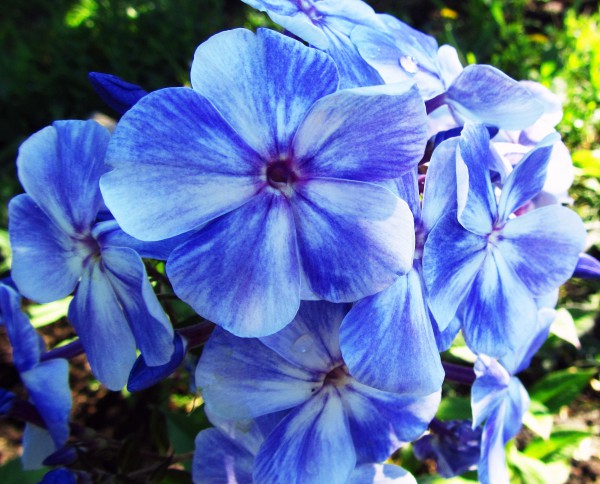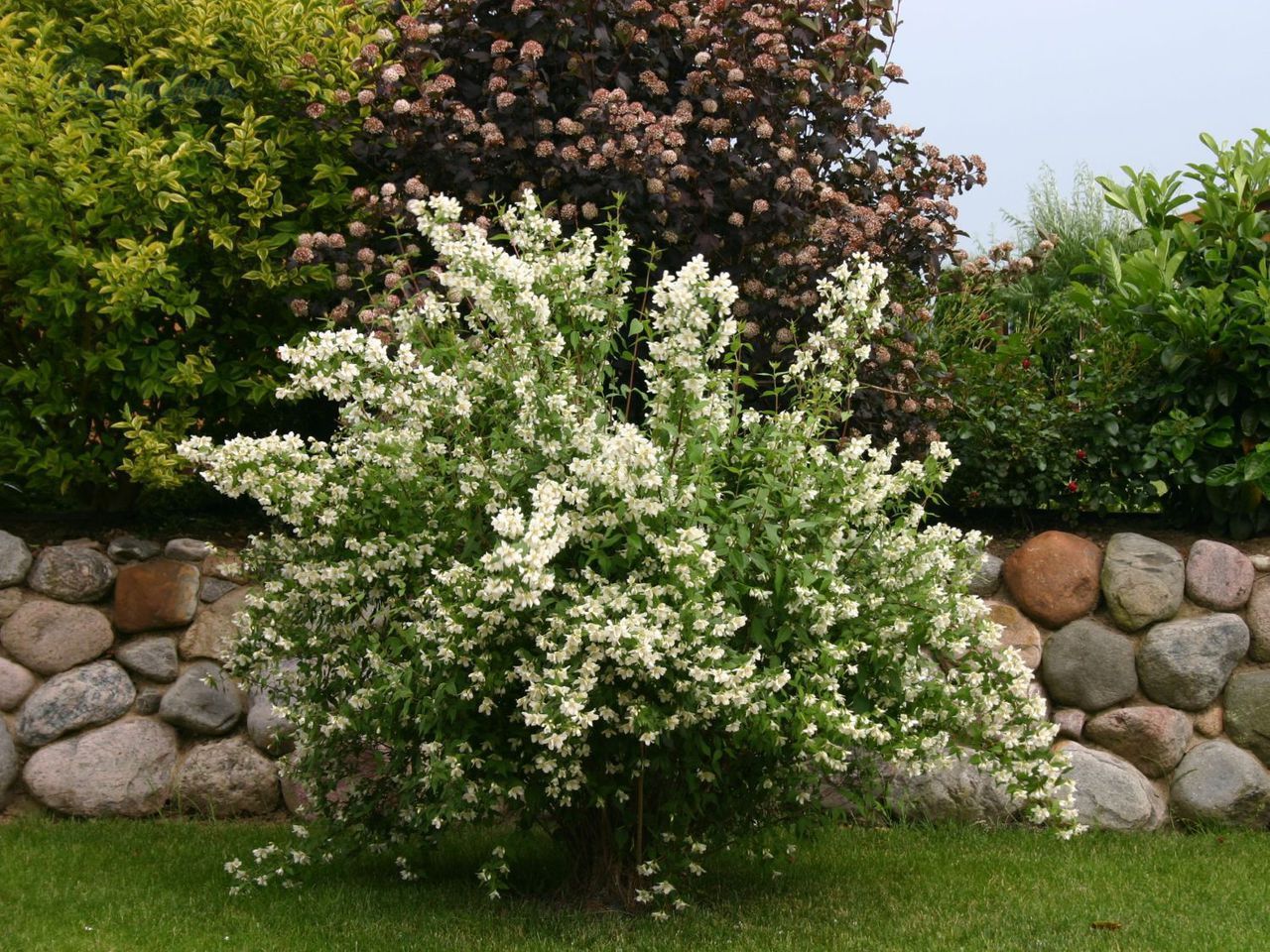Content:
Phlox paniculata Gzhel is a spectacular variety bred by E.A. The main characteristics of the variety are the height of the bush up to 80 cm and frost resistance. The plant is semi-spreading and does not require a garter. In terms of flowering time, it belongs to the early-medium varieties, blooms in July. In 2012, phlox Gzhel Maxi was bred with more compact bushes, but large inflorescences up to 25-30 cm in diameter.
Growing at home
To grow a flower on the site, extra efforts are not required. It is enough to know the main points.
The soil
Phloxes prefer fertile loamy loose soils, slightly acidic or close to neutral. When planting, humus (rotted manure) and ash should be used as fertilizers. Fertilizers need to be applied to a depth of no more than 30 cm, since this is how the roots of the plant develop.
Transfer
It is better to plant the bushes in a well-lit place, but not in the sun. It is better to transplant phlox Gzhel, like other varieties of this plant, in the spring in the first half of May. The bush will bloom in the same year, but 10-12 days later than usual. In autumn, plants can be transplanted from the second half of August to the end of September, but it is better not to delay with this, so that the phlox has time to take root and survive the winter. A bush can grow in one place for 7-10 years.
Blooming phlox can be transplanted if necessary. In this case, the plant will need abundant watering, and it is better to cut the flowers, otherwise the bush will spend energy not on rooting, but on continuing flowering.
When transplanting, a hole is dug about 20 cm deep. The exact dimensions must be determined so that they fit the root system. The resulting landing site is well spilled with water. Humus, ash, superphosphate are poured at the bottom of the pit, sand can be added to clay soils for loosening, and, conversely, loam can be added to sandy soils, which will save the plant from excessive drying out.
Further, the transplant itself: the roots are placed in a hole and straightened, soil is poured between them, the soil around the plant is slightly compacted and watered. When planting, the root collar should be 3-5 cm above ground level. If you raise it higher, then the bush may not overwinter, and if it is lower, it will not bloom and “go into growth”, spending energy on the formation of a branched root system.
Most importantly, 2-3 weeks after planting, do not allow the plant to dry out.
Annual feeding
Phlox responds well to feeding. They can be applied 5-6 times per season:
- In the spring after the snow melts and in the second half of May, for the growth of the green mass, it is better to use fertilizers with a high nitrogen content or water the plant with slurry, mulch the ground around the bush with humus. Excess nitrogen will make the bush too loose, requiring it to be tied to a vertical support.
- During the budding period, the application of nitrogen fertilizers must be reduced. Along with complex flower potash-phosphorus fertilizers, ash rich in minerals, especially potassium, can be applied.It can be dissolved in water for irrigation (1 tbsp. Per 1 bucket of water) or sprinkled around the plant as mulch - useful substances will be absorbed during rain and watering. The increased potassium content in fertilizers will make the flowers brighter and prolong the flowering period.
- The fourth feeding is carried out with phosphorus fertilizers in liquid form or superphosphate granules (10 - 15 g) are embedded in the ground.
- After flowering, they return to phosphorus-potassium fertilizers (20 g of superphosphate and 10 g of potassium sulfate per 10 liters of water). Superphosphate is poorly soluble in water, so it is better to use either a liquid complex fertilizer, or embed the granules in the ground, or dissolve them in a water bath in a uniformly heated dish. The last feeding will help phloxes prepare the root system for wintering and form buds for the next year.
Watering
It is advisable to water the plants in the evening or in the morning, spending about 15 liters (1.5-2 buckets) per 1 m² of planting. When watering, it is better not to pour on the leaves, especially with cold water in the heat. You need to spill soil around the plant or put a hose between the bushes.
After heavy rains and watering, you need to loosen the soil (about once every 2-3 weeks). This should be done carefully, since phloxes are plants with a shallow root system.
Preparing for winter
Around mid-October, the paniculate phlox needs to be cut: cut off the old stems to a height of 8-10 cm. The plant will not need them in winter, and besides, they will not become a breeding ground for pests and fungi for the next year. Timely implementation of autumn work will allow not to start the summer cottage season with dead wood trimming, which will save time in spring.
Reproduction
Phlox Gzhel can be propagated by dividing the bush. This procedure is best done in spring or early fall. In summer, transplanting is possible, but it is better to cut the flower stalks. Such a bush will bloom in the same year. The mother plant is carefully dug up, the shoots are cleared of the ground, but the main earthy clod must be preserved. Then manually, taking apart the roots, you need to divide the bush into several parts. If the phlox is old, you may need a shovel or knife, as it will be inconvenient to perform this operation with your hands.
Also, the plant can be propagated by rooting cuttings. It is better to plant them in May - June, when the shoots have not yet had time to stiffen. For this, one maximally long semi-lignified healthy shoot is cut, which must be divided into 3-4 cuttings 15 cm high (each should have 2-3 nodes with leaves). How to root it? In the place prepared for breeding, you need to add humus and sand. The cuttings are planted so that the bottom node is directly above the ground. Then they are poured and covered with a five-liter plastic bottle cut in half.
The description of the variety says that phlox take root quickly, and in the spring of next year they can be transplanted from the greenhouse, and in the summer they will already bloom.
Advantages and disadvantages of the variety
The undoubted advantage of the Gzhel variety is the large inflorescences of a memorable blue hue. In a flower bed, such a phlox stands out clearly from other white, pink and lilac plants.
Many flower growers consider its disadvantages to be the absence of re-flowering, since most other varieties of phlox, when pruning peduncles, release lateral flower shoots, some open new buds inside withering inflorescences. Gzhel, as a rule, blooms only once a summer, but for a long time - 3 weeks.
Another disadvantage is that the inflorescences of this variety do not "self-clean", do not shed wilted flowers. Therefore, summer residents who are very attentive to the state of the flower garden do it manually.
Despite these disadvantages, the Gzhel variety is grown by many growers and they advise others to do it, if only because it does not need to be covered for the winter. And there is not so much fuss with him over the summer as, for example, with chrysanthemums.















